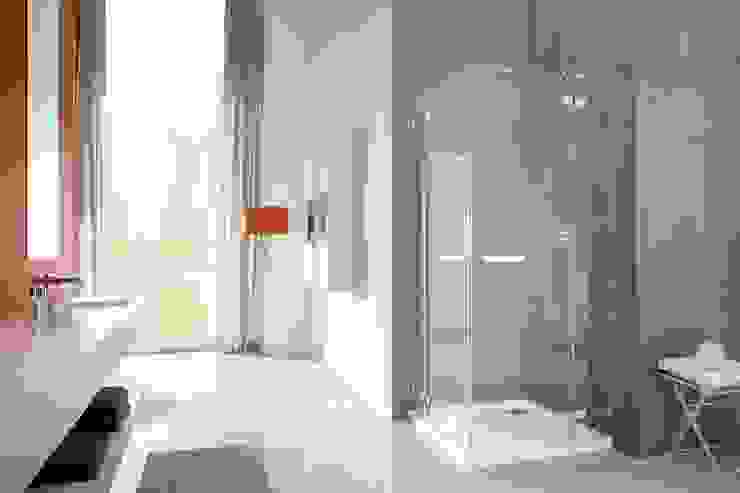Thorough Tutorial for Installing a New Shower Unit
Thorough Tutorial for Installing a New Shower Unit
Blog Article
We've stumbled on this post pertaining to Simple ways to Install a Shower Cubicle on Your Own down the page on the internet and figured it made sense to share it with you on this page.

A successful shower installation requires careful planning and a great deal of job. In most cases, you will require to do 3 sorts of tasks: framing wall surfaces, installing the plumbing, and completing wall surfaces.
Various Kinds Of Shower Units
A Lot Of Typical Blunders
Preparation.
To start with, you must pick the sort of shower that you want to set up. It is essential to identify whether the chosen shower is capable of dealing with particular systems and also can regulate a risk-free level of water through the central heating boiler. A lot of shower systems nowadays are designed to be versatile to various water pressures (such as kept hot water and also cool keys).
It is likewise important to consider the water pressure and also the preparation of the piping and drainage for the shower.
Technique.
Depending on the type of shower you wish to install, the shower head need to either be fitted in order to avoid its contact with the water in the bathroom listed below or the base tray, or it must have a check shutoff.
Before starting, it is a good idea to note the placements of the shower head and also control, and also to intend the pipe-work included. Furthermore, the water drainage system to remove the drainage will need to be prepared. Both positions of the cord path as well as the shower button will also need to be taken into consideration if an instant or electrical shower device is being installed.
Make use of the direction overview offered with the shower device to fit the shower control.Before fitting the pipelines that will provide the water to the shower system, it is important to remove the water. In order to protect the pipelines, they must be given a water resistant covering and also fitted with isolating valves. The pipes can then be hidden right into the wall as well as smudged over to neaten the general look.
Fit the base tray, shower head, and installations.
Attach the primary shower control to the pipes that will be providing the water (This might call for a female screw thread adapter).
Reconnect the water and examination the pipes for any leakages, as some may need tightening up.
If you are mounting an electrical shower, keep in mind to turn off the electrical energy supply prior to making any electric connections. Once these links have been made (there ought to be guidance within the user's manual), the power supply can be switched over back on.
Changing Water Pressure to Fit Your Shower.
The cold water storage tank can be raised to a higher elevation (often as low as 150mm (6inches)) by fitting a solid wood support below it - perhaps composed of struts and blockboards. If you choose this choice, the primary and also circulation pipelines will also have to be raised to meet the new height of the storage tank.
Alternatively, a booster pump (a single pump or a dual/twin pump) can be fitted. Whichever type is chosen, it should be linked right into the power supply in order to run.
Piping and also Drain.
It is best to make use of 15mm diameter supply pipes, and make the runs to the shower as short as well as straight as feasible so regarding preserve optimal stress as well as reduce heat loss. Furthermore, by minimising using elbows for pipeline edges, you can lower the resistance in the circulation of the water. You can achieve this by flexing the pipes instead.
How Do You Install a Shower? Follow This Guide
Installing a Shower at a Glance
Tools & Materials: Level, electric drill, caulk, hole saw, cedar shims, shower unit Step 1: Drill pilot holes Step 2: Prep fixture holes Step 3: Move unit into place Step 4: Caulk corners and base Step 5: Attach door Step 6: Install shower pan Whenever plumbing is involved in a DIY project, people worry about what might go wrong. The truth is that installing a shower isn’t that complicated, and you can save a lot of money by doing it yourself. You shouldn’t need to make any alterations to your plumbing to complete the job, and most of the tools you need will be provided in your new shower kit.
Can I Install a Shower Myself?
Even if you’ve never installed a shower before, you’ll find this to be a project that is perfectly suited for DIYers with a moderate level of experience. Whether you're doing a bathtub conversion or installing a new stall, most of what you need comes in shower kits that you can purchase from a hardware store. The first thing you need to do is determine what type of shower stall you want.
Single-panel stalls are the easiest to install because they come preassembled. All you need to do is put them in place. Multi-panel showers require a few additional steps, but you’ve got more control over the appearance of your unit. Multi-panel units are also much easier to handle if you’re going to do the installation without any help.
Be sure to take all appropriate safety precautions, such as wearing eye protection and gloves. When you’re removing or installing a shower unit, you might kick up debris that could hurt your eyes. You’ll also need to work with equipment that will get extremely hot, so be sure to have safety gloves handy.
Tools and Materials
2- to 4-foot level Electric drill with a 1/8-inch drill bit Caulk 2-inch hole saw Cedar shims The unit itself Before You Begin: Prep the Space
It’s highly important to measure your space accurately before putting the stall in. Measuring from the floor upward and from each corner outward will ensure you’ve got the right measurements. What you’re looking for is where the plumbing apparatuses are going to come through the stall. Transfer these measurements over to the back of your unit by drawing the locations of these holes using a pencil or marker.
Pull out your old shower and make sure to scrape off all the old caulking. Be thorough because you want to work with smooth surfaces for the best installation. Once you’ve pulled out your existing shower, you need to make sure that the floor is clean and dry. The best way to clean debris is with a shop vacuum, as it’ll soak up water and dirt together.
If you’re experiencing any plumbing issues, such as low water pressure, this is a perfect opportunity to solve them. Make sure that the pipes themselves are not in need of patching and clean your showerhead. When you turn the water back on after your project, check the pipes for signs of wear or disrepair. Anything beyond minor repairs should be handled by a plumber, and this is the best time to bring in a professional.
If the floor has any moisture at all, don’t proceed until it’s completely dry. The last thing you need is for the floor to rot or invite mold and mildew into your base. Once everything is dry, apply waterproof wallboard to the walls. This can be attached with screws or nails, then sealed with caulk so that water doesn’t seep into any crevices.

I stumbled upon that review on How to Install a Direct-to-Stud Shower Enclosure while doing a search on the web. Those who liked our article if you please be sure to pass it around. I praise you for your time. Visit us again soon.
Click Here Report this page